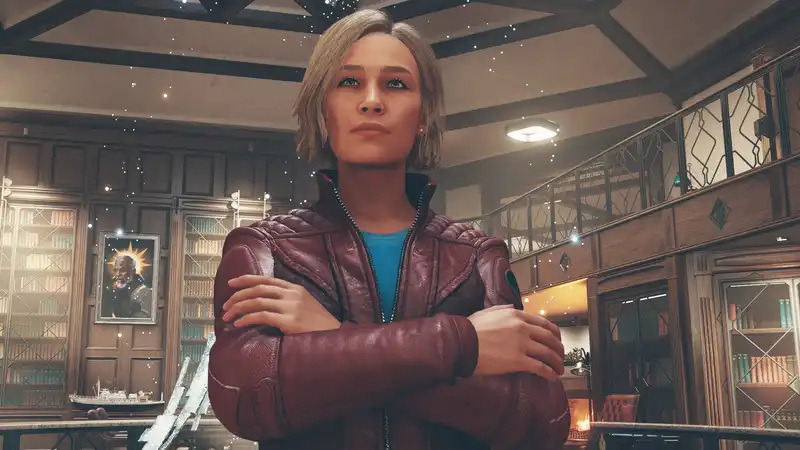Starfield may have over 1,000 planets, but the game's main quest ending (mild spoilers) features only one planet: Masada 3. First, there is a major space battle while orbiting the planet, then you have to fight dozens of enemies on the surface and underground, and finally, you have to fly through different dimensions to the places you visited earlier in the game.
According to former Starfield lead quest designer Will Shen, the creation of this lengthy final quest was all very last minute and came out of "necessity and urgency."
At the Game Developers Conference in San Francisco on Tuesday, Shen and Daryl Brigner, former lead level designer for Fallout 76, co-presented on the importance of collaboration in level and quest design The two developers worked together for nearly 15 years on Bethesda RPGs such as Skyrim, Fallout 4, and Fallout 76. Both have since left the company: Shen is now lead content designer at Something Wicked Games, and Brigner is world director at Soft Rains.
In their talks, Shen and Brigner discussed "House of Horrors," in which players investigate a haunted house, "Last Voyage of the U.S.S. Constitution," in which robots join players to return an 18th century Navy frigate to the sea and other impressive quest designs from "Skyrim" and "Fallout 4" were discussed. Near the end of his talk, Shen discussed the final quest in "Starfield" and what in particular was missing.
"We finally got to the point in the project where we could play [the game] all the way through. And it became clear that there was a big final place missing that would tie the story together and bring it to an action-packed, satisfying conclusion," Shen said. I was both the main quest implementer and the leader of the quest design team, so I had absolutely no time at all." The entire quest design team was already overbooked.
Part of the problem, Shen says, was the size of the team working on Starfield; the development team for Skyrim was about 100 people, which made collaboration between different departments easier. For "Fallout 4," it was about 150 people, for "Fallout 76" it was over 350, and for "Starfield" it was over 500. This includes not only Bethesda Game Studios, but also outside developers such as Machine Games, Nobody Studios, Arkane, Snowed In, and The Forge Interactive.
According to Shen and Brigner, the more people working on a game at different studios, the more problems can arise. Says Brigner, "It's harder than ever to know who is doing what and who to report to." The fragmentation of teams can create a "silo effect," with "departments scrambling for resources and saying 'no' to requests for collaboration. This could lead to "the inadvertent consequence of favoring departments over the needs of the match," and even basic collaboration between departments could be slowed to a crawl.
"Because we had to check every contingency, every request had to go through every producer," says Shen.
"It wasn't that simple to request something as simple as a chair.""We had to check all the contingencies. Do you need animation? Do you need sound effects for that?' How much would that add to the schedule, and could one of those teams not fit because they didn't have the time?When it became clear that Starfield did not have a large final set of main quests and no time to create them, Shen turned to Senior Level Designer Steve Cornett. Says Shen, "He was definitely our panic button." Cornett had the idea of dimension hopping, allowing players to revisit some key locations early in the game and, more importantly, saving time to create entirely new locations for the final battle.
As deadlines loomed, desperation could drive the divisions out of their silos and back together again. We don't have to wait for emergencies." Clear, consistent, project-level goals and communication keep everyone focused on what they need to focus on."
As for the final quest itself, when I first played it, it didn't feel like a last-minute scramble, but there were a few things I didn't like. The mercenaries fighting on the surface felt a bit out of place in a situation where there were already so many Starborn duplicates running around, and immediately fighting more Starborn, this time with robots, felt repetitive. The dimension hopping was fun, but the final battle with the duplicate members of the constellation would probably have been enough without the two earlier skirmishes. I also appreciated being able to escape from the final battle with Starborn. Not only was it a traditional Bethesda solution, but at that point I was excited to stop shooting and go to the end.
.

Comments